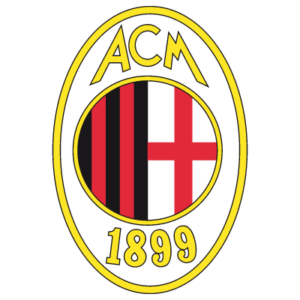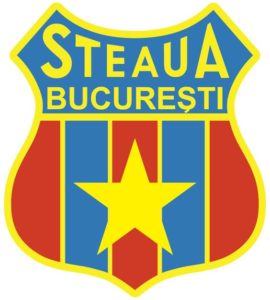Feature Photo: Getty Images
***
On this day, 30 years ago, the history of football changed as Arrigo Sacchi’s Milan trampled Steaua Bucuresti 4-0 with braces by Ruud Gullit and Marco Van Basten to conquer the European Cup 1988-89, the third in the history of the Rossoneri.
The triumph of May 24, 1989 at the Camp Nou in Barcelona marked the International legitimization of the Romagna-born coach’s football credo, a revolutionary concept of play made of high pressing, swift counterattacks (ripartenze in Sacchi’s jargon), and the firm idea that single players should be in the service of the team, and help it both with or without the ball.
Arrigo Sacchi’s at Milan was a relatively short-lived kingdom, and the Final against Steaua, La Partita Perfetta (“The Perfect Game,” as it was dubbed) – together with the Semifinal bout with Real Madrid – marked its most shimmering climax. The showdown at the Camp Nou was indeed exemplary even in its execution, the scorecard reading a perfect alternation Gullit-Van Basten-Gullit-Van Basten, an appalling exhibition by the most dominating strikers duo back in the days.
One could argue – and many have indeed done so – that the Prophet of Fusignano had an easy task in exploiting a lineup that could feature players the likes of the Dutch trio, which also included offensive midfielder Franklin Rijkard. But labeling Sacchi’s orchestra as simply the Milan degli Olandesi (“Milan of the Dutchies”) was a limitative synecdoche for a club whose defensive line was an inviolable no-trespassing zone, mostly consisting of home-grown players like Franco Baresi and Paolo Maldini.

As the end of the ‘80s decade approached, Milan had the perfect blend of youth, tradition, international talent, and visionary leadership brought together by President Silvio Berlusconi, whose idea of running the club as a company was making the football establishment cringe – whereas experience would eventually prove it was at least 10 years ahead of the competition. The time was right for making the leap, and becoming the protagonist again in Europe.
In the 1988-89 season, Milan were the incumbent Italian champions, but with the run for the Scudetto firmly in the hands of another legendary lineup – cross-town rivals Giovanni Trapattoni’s Inter dei Record – their attention quickly turned to the major European competition, the forbear of present day’s Champions League, which the Rossoneri had not won since 1969.
The Rossoneri’s path towards Barcelona had been a roller coaster of emotions, featuring enthusiastic moments, as well as some dreadful situations. Some go as far as saying that the legend of Arrigo Sacchi’s Milan would have never born, had his side not been saved by what became known as La Nebbia di Belgrado – “The Fog of Belgrade.”
During the retour match of their second-round confrontation with Red Star Belgrade, with the Rossoneri down 0-1, an unexpected thick fog fell on the Yugoslavian capital, forcing the referee to call the game off in the 64th minute. The following day, the match at Belgrade’s Marakana Stadium was restarted from 0-0, and ended in a 1-1 draw, just like the first leg in Milan. Arrigo Sacchi’s band advanced on penalties, leaving the door open to endless speculations about what would have happened, had the weather not helped the Rossoneri on the previous day…

In the Quarter Finals, a penalty by Marco Van Basten put the Milanese side past German champions Werder Bremen on a 1-0 aggregate score.
But if Milan had struggled hard to book their spot among the top four of Europe, the Semifinal against Real Madrid was the true moment when the legend of Arrigo Sacchi’s Invincibili was born. First, Milan snatched a 1-1 tie at the Santiago Bernabeu after having dominated the match. It took another unconceivable goal by Van Basten – a diving header that gave the ball an effect which defied any logic and law of physics – to equalize Hugo Sanchez’s initial lead.
Two weeks later at San Siro Stadium, the Devils literally annihilated the Spanish champions, delivering them one of the most humiliating hammerings of their history. It ended 5-0 for the Rossoneri, at the end of a match that marked an ideal passing of the torch between the traditionally most dominating European side, and the one destined to hold that unofficial title for the next decade.
The last obstacle between Milan and their third European Cup were Romanian champions Steaua Bucuresti, coached by Anghel Iordanescu. The Red and Blues were no Real Madrid, but their name was still fearsome, and their recent history remarkable enough to elicit a cautious reverence.
Only two years earlier, Steaua had actually lifted the top European trophy – first team from Eastern Europe to do so – at the end of a Final won on penalties against Barcelona, with goalkeeper Helmut Duckadam saving all the four shots from the Spaniards!
Steaua were on their way to conquer the domestic Liga I for the 5th time in a row. They were undefeated in Romania in the past three years, and their European run had been impressive so far, as they had eliminated all their opponents on a minimum three-goal lead aggregate.
But despite boasting a more than promising talent, 24-year-old Gheorghe Hagi, a future Real Madrid and Barcelona (actually, even Brescia…) player bearing the daring nickname of Maradona of the Carpathians, Iordanescu’s lineup were now past its prime.
On top of that, the Romanians had the major handicap of not being able to count on their passionate fan base, who could not travel under the regime of dictator Nicolae Ceausescu. Out of the 98000 spectators filling the Camp Nou like a pressure cooker, 80000 were Milan supporters coming from all over the world. In retrospect, Steaua had simply no chance.
One more reason to look forward to the Barcelona Final was the battle for the European Cup’s top scorer title, with Rossonero Marco Van Basten leading the ranks with 8 goals, just ahead of Steaua’s Marius Lacatus (7) and Gheorghe Hagi (6).

The match at the Camp Nou expectedly turned into a slaughter. Milan amassed something like 21 scoring chances. The Rossoneri’s four goals came in just 46 minutes, and when Van Basten deposited the ball into Steaua’s goal for the fourth time, the Red and Blues had yet to shot a single time.
Goalkeeper Silviu Lung did what he could to live up to his predecessor Duckadam’s fame, but could only delay the inevitable. A few minutes after the start, he dove to his left to defuse a beautiful right-foot volley by Roberto Donadoni. Shortly after, he was saved by his left post, which pushed back Ruud Gullit’s shot in the 16th minute.
The Tulipano Nero (“The Black Tulp”) had to wait just two more minutes before writing his name in the scorecard. When Angelo Colombo blasted a violent left-foot shot from out of the box, calling Lung to another difficult save, he was the fastest to pounce on the ball for the tap-in, pushing it into the unguarded goal. Gullit run to celebrate under the stands, sending kisses to the sky.
Van Basten equaled his fellow countryman’s feat in the 27th minute, as he leapt over his marker to convert Mauro Tassotti’s cross into the Rossoneri’s second goal by means of a header which had everything: Timing, power, elegance – the true essence of Milan’s one and only Number 9’s unparalleled talent.

Gullit made it three for the Italian side before the end of the first half, controlling the ball and then whipping it into Lung’s top left corner, far from the Romanian goalie’s reach. And when Van Basten scored the fourth, catching a pass by Franklin Rijkaard, he did it so fast that the Italian TV commentators still had to restart their report after the half time break.
The Swan of Utrecht’s second goal, which came just 50 seconds into the second half, secured his claim to the top scorer title and turned the last 45 minutes into a tormented agony for Steaua. Milan eventually hit the brake, and the Romanians managed to show themselves around keeper Giovanni Galli’s area on a few occasions, and save the honor.
It was an absolute triumph for the reborn Diavolo and the first International title for President Silvio Berlusconi. The future Italian Prime Minister, who back in the days was “only” a successful and controversial businessman, had taken over a club on the verge of bankruptcy and raised them back to the highest peaks of Italian and European football in the space of four years.
He had done so by placing a risky bet on a coach whose experience prior to joining Milan was only in Serie B. His name was Arrigo Sacchi. Like it or not, he was changing the way the beautiful game was played, and now he had also had his European consecration.
Commenting on the Final in Barcelona, French newspaper L‘Equipe wrote: “Once, there was the game of football. Then, along came Milan.” And it remained on top for long, we would add.
MATCH REPORT
May 24, 1989 – European Cup 1988-89 Final
MILAN-STEAUA BUCURESTI 4-0
SCORERS: 18′ Gullit, 27′ Van Basten, 39′ Gullit, 46′ Van Basten
 |
MILAN (4-4-2): G. Galli, Tassotti, P. Maldini, Colombo, Costacurta (74′ F. Galli), Baresi, Donadoni, Rijkaard, Van Basten, Gullit (60’ Virdis), Ancelotti (Pinato, Mussi, Evani) Coach: Sacchi |
 |
STEAUA BUCURESTI (4-4-2): Lung, Petrescu, Ungureanu, Stoica, Bumbescu, Iovan, Lacatus, Minea, Piturca, Hagi, Rotariu (46′ Balint) (Liliac, Bunaciu, Balan,Negrau) Coach: Iordanescu |
REFEREE: Tritscher (West Germany)
NOTES: Yellow Card: Baresi (M)

